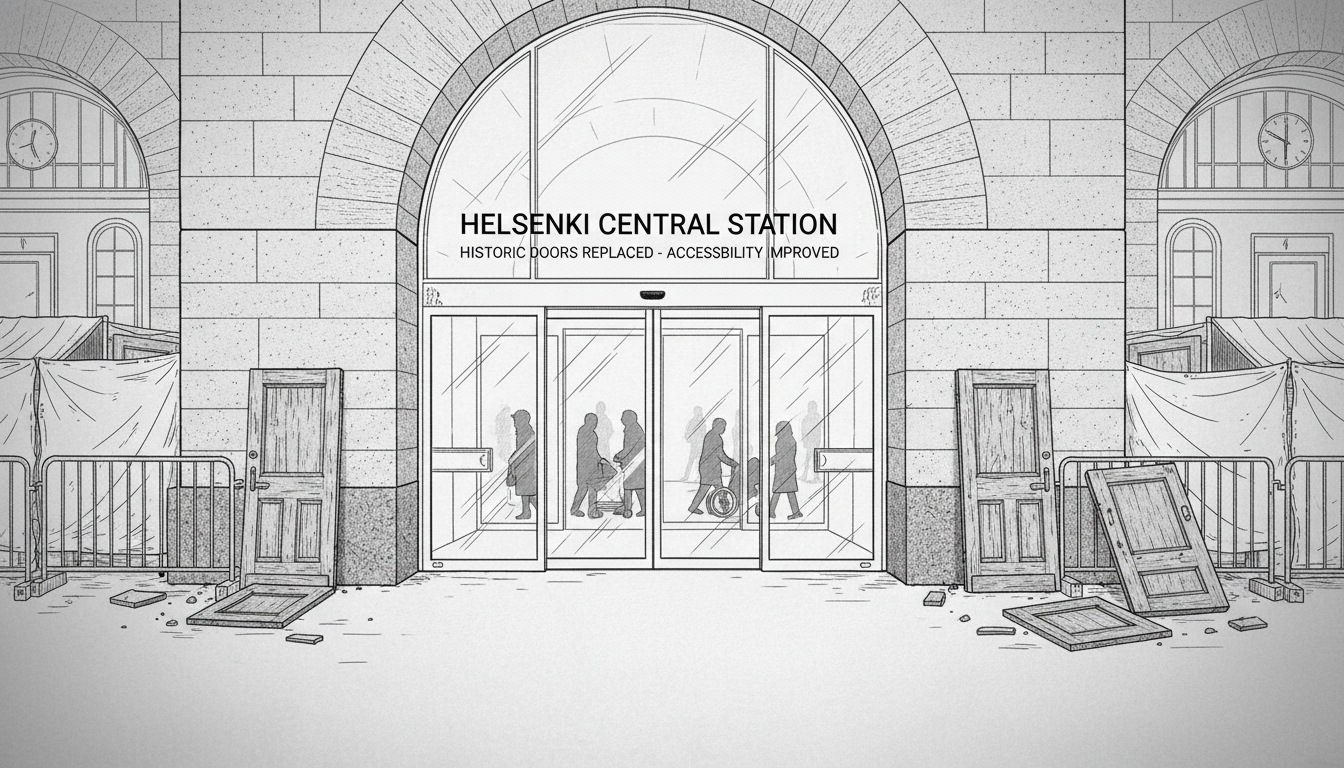Regular commuters and visitors to Helsinki Central Station are noticing a major change this week. The iconic wooden doors leading from the kiosk hall to the platform area have disappeared. Workers installed modern glass sliding doors in their place during recent renovations.
The station's property manager explained the decision focused on accessibility. The old heavy timber doors presented challenges for wheelchair users and parents with strollers. Helsinki Central Station serves as Finland's busiest transportation hub. The new sliding doors create a completely barrier-free passage between areas.
Jenna Kantanen, a 27-year-old passenger from Oulu, appreciated the practical benefits. She walked through with shopping bags without needing to touch anything. It works well and provides more space to move through, she noted. Kantanen admitted she didn't even notice the change at first.
The original solid oak doors dated back approximately 25 years. Many passengers remembered them for their substantial weight and distinctive character. While not part of Eliel Saarinen's original 1919 station design, they had become familiar landmarks.
Three friends arriving from different cities paused to discuss the transformation. Kirsti Hildén, 76, from Vantaa, said they had just been talking about the doors. She remembered the previous wooden doors required real effort to open. Now people walk through without touching any handles.
Her friend Aila Leikola, 77, from Lohja, acknowledged the convenience but felt nostalgic. The old doors were nice precisely because they were old, she observed. They matched the building's historic character. The new glass doors resemble shopping mall entrances more than railway station portals.
The third friend, Marja-Leena Mehtonen from Tampere, had no complaints. These work fine for me, she said with a laugh.
The renovation addresses more than just accessibility concerns. Station officials noted the kiosk hall previously dropped to just 8 degrees Celsius during winter. The old doors contributed to difficult working conditions for staff. The new sliding doors allow for the installation of air curtains and weather barriers that will maintain comfortable temperatures year-round.
This change represents part of Helsinki Central Station's ongoing evolution. The station originally opened without any doors between the kiosk hall and platforms. Workers installed barriers only after a serious fire in 1952. The current renovation continues this pattern of adapting the historic building to contemporary needs.
Some passengers expressed hope that other original doors in the station hall would remain untouched. The property manager confirmed that while some original oak doors have been restored, there are no current plans to replace additional doors with sliding versions.
The station will complete the door replacement project by next summer. The remaining wooden doors in the kiosk hall will soon follow their counterparts into history. For now, the new sliding doors remain open continuously. They will eventually operate with motion sensors as passengers approach.
This renovation illustrates the constant balance between preserving historic character and meeting modern accessibility standards. While the glass doors improve functionality, they undoubtedly alter the station's traditional atmosphere. The change reflects how even beloved public spaces must evolve to serve all members of society equally.

